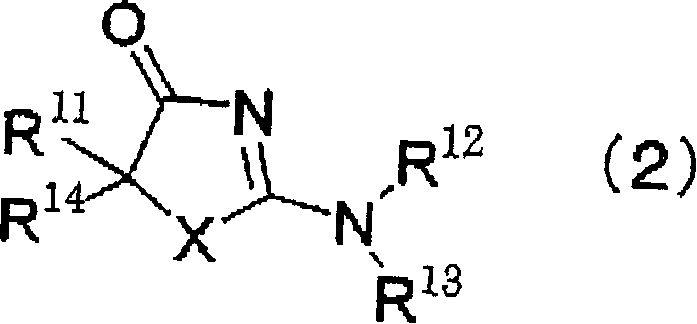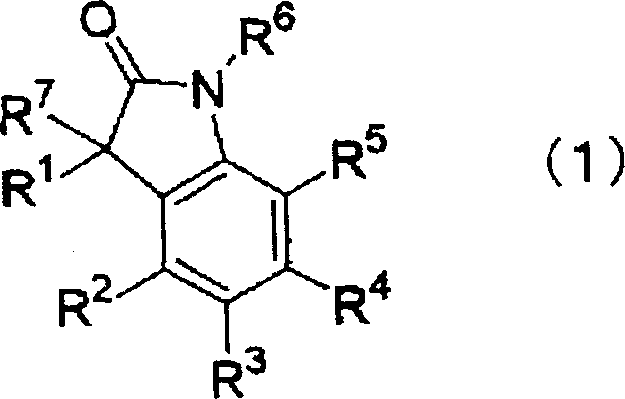Photosensitive composition
A technology of photosensitive composition and compound, which is applied in the field of photosensitive composition, can solve the problems of unknown photoinitiation system, etc., and achieve the effect of excellent printing durability
- Summary
- Abstract
- Description
- Claims
- Application Information
AI Technical Summary
Problems solved by technology
Method used
Image
Examples
specific example
[0089] Specific examples of preferred initiator compounds are described according to the classification of (a) compounds undergoing bond cleavage by reduction reaction to generate active species, (b) compounds undergoing bond cleavage by oxidation to generate active species, and (c) other compounds. However, in many cases, there is no common view as to which of (a) to (c) an individual compound belongs to, and thus, the present invention should not be considered limited to those descriptions involving the above reaction mechanism.
[0090] (a) Compounds that produce active species by bond cleavage through reduction
[0091] Compounds containing carbon-halogen bonds:
[0092] Reductive cleavage of carbon-halogen bonds is believed to generate reactive species (for example, as described in polymer Preprints, Jpn. , 41(3), 542(1992)). Free radicals or acids can be generated as active species. Specifically, it is preferable to use, for example, halomethyl-s-triazine; halometh...
Embodiment 1 to 13 and comparative example 1 to 4
[0381] (preparation of carrier)
[0382] Etching was performed by immersing a 0.3 mm thick aluminum plate in a 10% by weight aqueous sodium hydroxide solution at 60° C. for 25 seconds, washed with running water, neutralized and rinsed with a 20% by weight nitric acid solution, and then washed with water. Then, in an aqueous solution of 1% by weight of nitric acid, use an electric current of 300 coulombs / dm at the time of the anode 2An alternating current with a sinusoidal waveform is used to electrolytically roughen the aluminum plate. Next, the aluminum plate was immersed in 40 degreeC 1 weight% sodium hydroxide aqueous solution for 5 second, and 60 degreeC 30 weight% sulfuric acid aqueous solution for 40 seconds, and desmut treatment was performed. Then, in 20% by weight sulfuric acid aqueous solution, the current density is 2A / dm 2 Next, perform anodizing treatment for 2 minutes to form a thickness of 2.7g / m 2 anodized film. The surface roughness thus treated was measur...
Embodiment 14 to 25 and comparative example 5
[0446] On the aluminum support used in each of Examples 1 to 13, an interlayer, a photosensitive layer and a protective layer were successively formed in the manner shown below to prepare a planographic printing plate precursor.
[0447] (interlayer coating)
[0448] Prepare an interlayer coating solution with the following composition, and use a spinner to coat the surface of the carrier at 180 rpm so that the coating amount of phenylphosphonic acid is 20 mg / m 2 , and dried at 80° C. for 30 seconds to form an interlayer.
[0449] interlayer coating solution
[0450]Phenylphosphonic acid 0.07g to 1.4g
[0451] Methanol 200g
[0452] (Formation of photosensitive layer)
[0453] A photosensitive composition having the following composition was coated on the interlayer using a spinner so that the coating amount was 1.6 g / m 2 , and dried at 100° C. for 1 minute to form a photosensitive layer.
[0454] photosensitive composition
[0455] Polyaddition compound (compound shown...
PUM
| Property | Measurement | Unit |
|---|---|---|
| absorption wavelength | aaaaa | aaaaa |
| wavelength | aaaaa | aaaaa |
| thickness | aaaaa | aaaaa |
Abstract
Description
Claims
Application Information
 Login to View More
Login to View More - R&D
- Intellectual Property
- Life Sciences
- Materials
- Tech Scout
- Unparalleled Data Quality
- Higher Quality Content
- 60% Fewer Hallucinations
Browse by: Latest US Patents, China's latest patents, Technical Efficacy Thesaurus, Application Domain, Technology Topic, Popular Technical Reports.
© 2025 PatSnap. All rights reserved.Legal|Privacy policy|Modern Slavery Act Transparency Statement|Sitemap|About US| Contact US: help@patsnap.com



